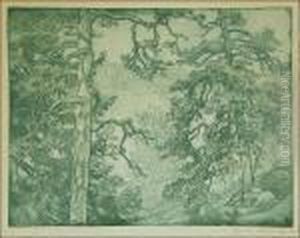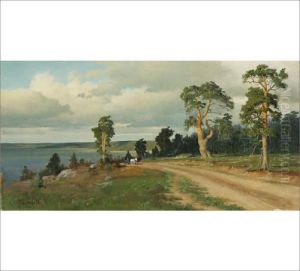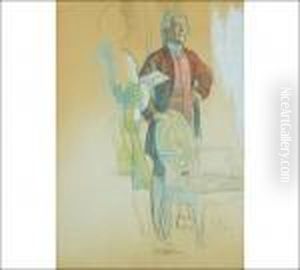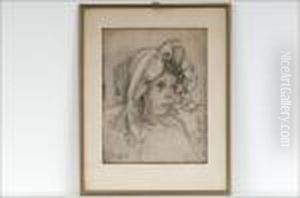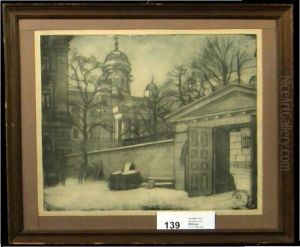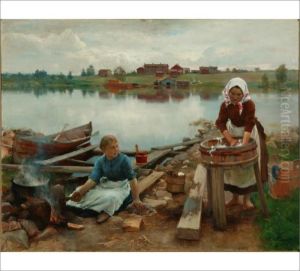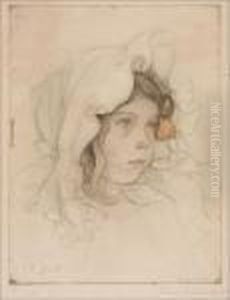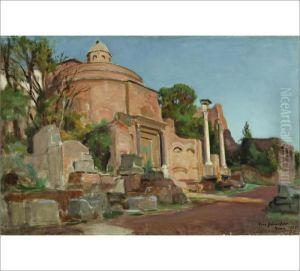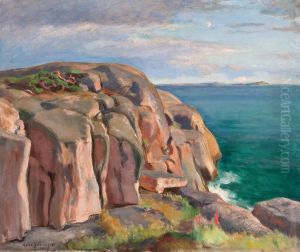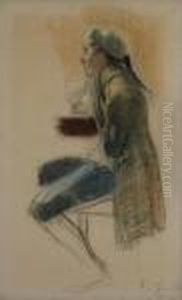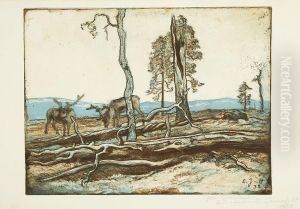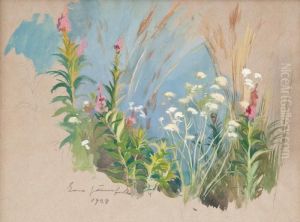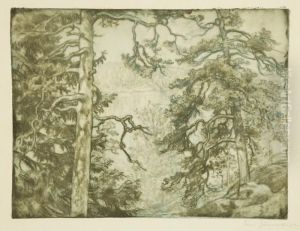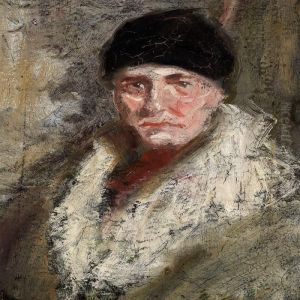Eero Jarnefelt Paintings
Eero Järnefelt, born Eero Erik Nikolai Järnefelt on November 8, 1863, was a distinguished Finnish painter and graphic artist known for his realistic works and his association with the Finnish national romantic movement. He hailed from a prominent Finnish cultural family; his father was General August Aleksander Järnefelt and his mother was Elisabeth Järnefelt, who was a well-known hostess of a cultural salon.
Järnefelt received his initial artistic education at the Drawing School of the Finnish Art Society and later studied at the Imperial Academy of Arts in St. Petersburg, Russia. Influenced by his time in St. Petersburg and by the work of other European artists, Järnefelt became part of a generation of artists who helped shape the Finnish art scene at the turn of the 20th century.
Throughout his career, Järnefelt was deeply influenced by the Finnish landscape and rural life. He is perhaps best known for his masterpiece 'Under the Yoke (Burning the Brushwood)' painted in 1893, which depicts Finnish peasants working the land and has become an iconic image of the Finnish struggle and the national romantic movement. His works often dealt with themes of nature and the Finnish people, and he was able to capture the essence of Finland's wilderness and the spirit of its inhabitants.
Järnefelt was also instrumental in bringing the plein air method of painting to Finland, which involved painting outdoors to capture the natural light and atmosphere. He spent many summers in the Finnish countryside with his family, where he painted extensively.
In addition to his painting, Järnefelt was known for his stage designs for the Finnish National Theatre. His work in theatre contributed to the development of a Finnish national style in stage design.
Eero Järnefelt's legacy is one of a pioneer in Finnish art who helped to establish a distinct Finnish identity in the arts. He passed away on November 15, 1937, leaving behind a body of work that continues to be celebrated for its contribution to Finnish culture and art history.
